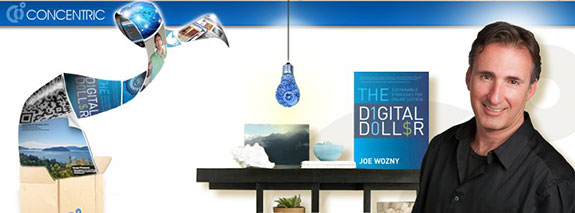 After the last post, I hope you have a bunch of things written down that you want to accomplish in your life and in more specifically in the next year. We are going to come back to that list shortly. I firmly believe that success in certain areas of one’s life can equal extreme failure in other areas of one’s life, if one is not careful. For example, how successful would I really be if I wrote 4 books next year; but at the same time, alienated my family and friends because I never spent time with them? I also believe that the synergy of success from one area, can fuel passion and greater achievement in another area. So take that same example, if I met the needs and wishes of my spouse and family, and thus ended up improving my relationships, that joy and success would carry over and make me more passionate and motivated to duplicate that success in another area of my life, like writing books. Plus I would probably have more support from my wife and family for doing so.
After the last post, I hope you have a bunch of things written down that you want to accomplish in your life and in more specifically in the next year. We are going to come back to that list shortly. I firmly believe that success in certain areas of one’s life can equal extreme failure in other areas of one’s life, if one is not careful. For example, how successful would I really be if I wrote 4 books next year; but at the same time, alienated my family and friends because I never spent time with them? I also believe that the synergy of success from one area, can fuel passion and greater achievement in another area. So take that same example, if I met the needs and wishes of my spouse and family, and thus ended up improving my relationships, that joy and success would carry over and make me more passionate and motivated to duplicate that success in another area of my life, like writing books. Plus I would probably have more support from my wife and family for doing so.
It is important then to figure out what are those areas of your life that need attention. You cannot have a couple of annual goals without taking into account the areas of your life that will require attention during the year and like I mentioned, it would be a failure to achieve your annual goals, but then ruin your relationships, your health, or some other important area.
This next exercise will help to bring more focus and balance to your annual goals. You need to determine the “life areas” that you want to focus on, together, that will in-turn make you successful all around. At this point we are not concerned with the specifics of what kind of goals you will have under these life areas; you just need to determine what they are. Here are some examples:

There could be a lot of other options, but you don’t want to have more than 7 or 8 focus areas to work on. More than that and you might be spreading yourself too thin, ideally around 5 focus areas is ideal. These focus areas are really important, because they help define what your will be your balancing act of the next year. Plus they will help you determine your top annual goals.
The annual goals will encompasses all these things. It helps to focus you, and it helps you to determine what is not important in the coming year. This list of focus areas is not all-inclusive, as there are bound to be many directions you are pulled in, but this really helps to limit that pulling from the many areas of your life and to focus on what will make you the best you can be at the end of the coming year.
Here is your homework:
- Think about the focus areas that are important in your life. Ask yourself, what things if I accomplished this year would make me feel more successful and have a greater sense of satisfaction with my life? You may want to read this with your spouse, children, or other stakeholders, and go through the exercises together. Ask what areas you and your stakeholders feel would produce the greatest level of satisfaction?
- After you come up with all your focus areas, you need to now focus further. It is likely you will come up with a lot of areas. You need to slim this down to only 5 to 7 focus areas. More than that and it will be difficult to create any balance.
In the next post we will discuss annual goals, annual vision and drill down more on the focus areas. Good Luck! Please share your thoughts below, your wisdom might help another.

 On June 1st of 2012, I released a guest post on a personal branding site that went viral. I couldn’t believe how much it was shared on Twitter and other social networks in such a short amount of time. I was invited to start-off the first day this Personal Branding Blogathon, put on by Peter Sterlacci at
On June 1st of 2012, I released a guest post on a personal branding site that went viral. I couldn’t believe how much it was shared on Twitter and other social networks in such a short amount of time. I was invited to start-off the first day this Personal Branding Blogathon, put on by Peter Sterlacci at  Success Plan, Personal Success Plan, Annual Plan, Resolutions, Goals… nope, lets combine it all into The Ultimate Annual Personal Success Plan, now is the time! As many of my readers have seen I have been working on an e-book for the Ultimate Personal Success Plan. As I have been working on it there has been one thing that kept bugging me. – I hate e-books… Usually when someone gives away an e-book, I download it, I browse through it, and then it goes in a folder where e-books go to rest and ultimately sit unopened forever more.
Success Plan, Personal Success Plan, Annual Plan, Resolutions, Goals… nope, lets combine it all into The Ultimate Annual Personal Success Plan, now is the time! As many of my readers have seen I have been working on an e-book for the Ultimate Personal Success Plan. As I have been working on it there has been one thing that kept bugging me. – I hate e-books… Usually when someone gives away an e-book, I download it, I browse through it, and then it goes in a folder where e-books go to rest and ultimately sit unopened forever more. Jim Valvano said, “Be a dreamer. If you don’t know how to dream, you’re dead.” No matter how you feel after the election, and no matter what comes out of the next few weeks; you must keep YOUR dream alive. Governments, kings, rulers, and bad relationships cannot kill your dream. They may dampen your spirits, crush your hopes, and cut into your nerves; but they cannot take away YOUR dream.
Jim Valvano said, “Be a dreamer. If you don’t know how to dream, you’re dead.” No matter how you feel after the election, and no matter what comes out of the next few weeks; you must keep YOUR dream alive. Governments, kings, rulers, and bad relationships cannot kill your dream. They may dampen your spirits, crush your hopes, and cut into your nerves; but they cannot take away YOUR dream. Back in 2011 I was working for a company as Chief Operations Officer. In 2009 I had sold my company to this organization, but after the first year or so, I knew that it wasn’t going to be the place to hang my hat for the rest of my career. So I began thinking about and preparing for a career change. I had sold my company because I had created a cloud computing model that had huge potential. I was passionate about cloud computing and technology and felt I was on the forefront of the industry (which I was).
Back in 2011 I was working for a company as Chief Operations Officer. In 2009 I had sold my company to this organization, but after the first year or so, I knew that it wasn’t going to be the place to hang my hat for the rest of my career. So I began thinking about and preparing for a career change. I had sold my company because I had created a cloud computing model that had huge potential. I was passionate about cloud computing and technology and felt I was on the forefront of the industry (which I was). About 4 or 5 years ago, I wrote an article for a site and discussed the idea that it seems like everyone and their dogs are becoming social media experts. Over the years I have read books about Twitter, Facebook, Blogging, Social Media, and Search Engine Optimization; and to be frank, most of them are not that good, especially for the most important demographic of this knowledge – leaders and business owners trying to grasp this new digital landscape. I was afraid that the right book was not going to come along.
About 4 or 5 years ago, I wrote an article for a site and discussed the idea that it seems like everyone and their dogs are becoming social media experts. Over the years I have read books about Twitter, Facebook, Blogging, Social Media, and Search Engine Optimization; and to be frank, most of them are not that good, especially for the most important demographic of this knowledge – leaders and business owners trying to grasp this new digital landscape. I was afraid that the right book was not going to come along.
 According to Merrill Lynch, “50% of employee skills become outdated in 3 to 5 years.” WOW, when I read this statistic, it really surprised me. Many leaders think that the experience of just doing the required work, day in and day out, is enough to keep their employees knowledgeable to optimally perform their duties. Unfortunately that is not true at all.
According to Merrill Lynch, “50% of employee skills become outdated in 3 to 5 years.” WOW, when I read this statistic, it really surprised me. Many leaders think that the experience of just doing the required work, day in and day out, is enough to keep their employees knowledgeable to optimally perform their duties. Unfortunately that is not true at all. I know I am an odd one, but I actually like vanilla ice cream, in fact it is my favorite flavor. Yet, even vanilla ice cream has a lot of varieties, and there are a few brands that are greatly superior than the others. Whether your business is about ice cream, candy, technology, widgets, or some other gadget …differentiation is one of the things that separates the good from great!
I know I am an odd one, but I actually like vanilla ice cream, in fact it is my favorite flavor. Yet, even vanilla ice cream has a lot of varieties, and there are a few brands that are greatly superior than the others. Whether your business is about ice cream, candy, technology, widgets, or some other gadget …differentiation is one of the things that separates the good from great! Jane Hamilton, an American novelist beautifully said, “It is books that are the key to the wide world; if you can’t do anything else, read all that you can.”
Jane Hamilton, an American novelist beautifully said, “It is books that are the key to the wide world; if you can’t do anything else, read all that you can.”